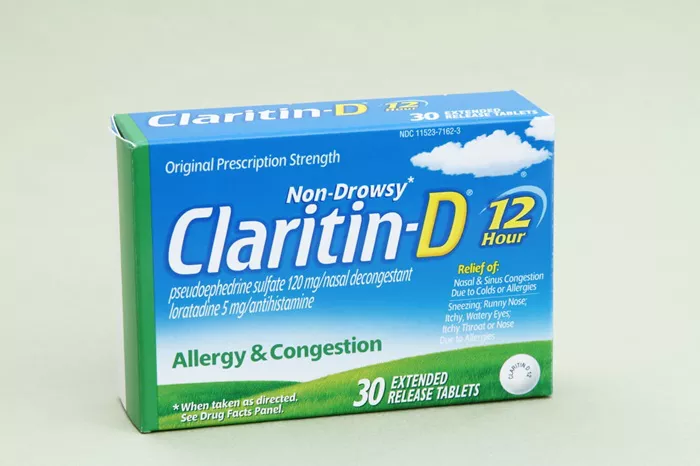High-Intensity Interval Training (HIIT) has become one of the most popular and effective workout methods for people looking to improve their fitness levels, burn fat, and enhance cardiovascular health in a short amount of time. Whether you are a beginner or an experienced athlete, HIIT can be tailored to suit your fitness goals, making it a versatile and highly efficient form of exercise.
In this article, we will explore what HIIT is, how it works, its benefits, and how to implement it into your fitness routine for maximum results.
What Is High-Intensity Interval Training (HIIT)?
High-Intensity Interval Training, often abbreviated as HIIT, is a form of cardiovascular exercise that alternates between short, intense bursts of activity followed by a period of low-intensity recovery or rest. This cycle of work and rest can last anywhere from 20 seconds to a few minutes, depending on the structure of the workout. The key to HIIT is the intensity of the exercise; the work phase should push your body to work at 80-95% of your maximum effort, while the recovery phase allows your heart rate to lower and prepare for the next round of intense effort.
HIIT workouts are typically performed for a shorter period compared to traditional steady-state cardio workouts, making them an ideal option for individuals with busy schedules. Despite their shorter duration, HIIT has been proven to provide comparable, if not superior, results when it comes to fat loss and improving aerobic capacity.
How Does HIIT Work?
The mechanism behind HIIT revolves around the body’s response to intense physical effort. When you perform high-intensity exercises, your body’s energy systems are challenged to their maximum. This leads to increased heart rate, higher calorie burn, and greater muscle engagement. During the recovery periods, the body continues to burn calories as it attempts to restore balance and recover from the exertion.
One of the primary physiological effects of HIIT is the afterburn effect, also known as Excess Post-Exercise Oxygen Consumption (EPOC). After a HIIT session, the body continues to burn calories at an elevated rate for hours after the workout has been completed. This is due to the increased metabolic activity as the body works to repair muscles, replenish energy stores, and restore normal function.
Benefits of HIIT
Time Efficiency: One of the most significant advantages of HIIT is its time efficiency. Traditional cardio workouts often require longer durations to achieve similar results in terms of fat loss and cardiovascular health. HIIT, on the other hand, can provide these benefits in a fraction of the time. A typical HIIT session lasts between 15 to 30 minutes, making it an excellent choice for individuals with busy schedules.
Fat Loss and Weight Management: Numerous studies have shown that HIIT is highly effective for fat loss. The high-intensity bursts increase the calorie burn during the workout, while the afterburn effect ensures the body continues to burn calories post-exercise. HIIT has been shown to target stubborn fat, especially visceral fat, which surrounds internal organs and is linked to various health risks.
Improved Cardiovascular Health: HIIT has been proven to enhance cardiovascular health by improving heart function, increasing VO2 max (the maximum amount of oxygen your body can utilize during exercise), and reducing resting heart rate. These improvements reduce the risk of heart disease, stroke, and other cardiovascular conditions.
Increased Muscle Tone and Strength: While traditional cardio may help you shed fat, HIIT workouts also incorporate strength elements that engage various muscle groups. By using bodyweight exercises or adding resistance, HIIT can help increase muscle tone and strength. The fast-paced nature of HIIT also improves endurance, making it a great workout for those seeking to increase their physical stamina.
Variety and Flexibility: HIIT is incredibly versatile and can be customized to fit your fitness level and goals. Whether you are looking to focus on fat loss, build endurance, or increase strength, HIIT can be modified to suit these objectives. Additionally, you can perform HIIT with various exercises, including running, cycling, bodyweight movements, resistance training, and even swimming. This variety helps keep the workouts engaging and reduces the risk of plateauing.
Improved Insulin Sensitivity: HIIT has been shown to improve insulin sensitivity, which is crucial for preventing and managing type 2 diabetes. The high-intensity nature of the workout increases glucose uptake into muscles, helping regulate blood sugar levels. This makes HIIT a beneficial exercise option for individuals looking to manage or prevent diabetes.
How to Do HIIT
Now that you understand the benefits of HIIT, let’s break down how to do it effectively.
1. Warm-Up
Before you jump into a HIIT workout, it’s essential to warm up your body. A proper warm-up increases blood flow to the muscles, reduces the risk of injury, and prepares your body for the intensity to come. Spend 5-10 minutes warming up with dynamic movements such as arm circles, leg swings, light jogging, or jump rope.
2. Structure Your Workout
A typical HIIT workout involves alternating between high-intensity activity and low-intensity recovery. Here’s a basic structure to follow:
Work Phase: Choose an exercise that gets your heart rate up and challenges your muscles. This could be anything from sprints, burpees, jumping jacks, mountain climbers, or squat jumps. Perform the exercise at maximum effort for a set period, typically 20-45 seconds.
Rest or Recovery Phase: After each work phase, you’ll need a period of active recovery. This could be light jogging, walking, or simply resting. Rest for about 30 seconds to 2 minutes, depending on the intensity of the work phase.
A beginner HIIT workout might consist of 20-30 seconds of high-intensity work followed by 40-60 seconds of recovery. As your fitness level improves, you can adjust the work-to-rest ratio to make the workout more challenging.
3. Choose Your Exercises
HIIT can be performed using a variety of exercises. Here are some examples:
Bodyweight Exercises: Jump squats, push-ups, burpees, lunges, high knees, mountain climbers.
Cardio Exercises: Running sprints, cycling, rowing, jump rope.
Resistance Training: Kettlebell swings, dumbbell snatches, squat presses, resistance band exercises.
The key is to choose exercises that engage large muscle groups and elevate your heart rate. The more muscles you engage, the more energy you burn.
4. Progressively Increase Intensity
As you become more accustomed to HIIT, you can progressively increase the intensity of your workouts by shortening rest periods, adding more work phases, or increasing the length of the work phase. This progressive overload will help you continue to see improvements in your fitness levels.
5. Cool Down
Just as warming up is important, so is cooling down. After finishing your HIIT workout, spend 5-10 minutes doing gentle stretching or walking to bring your heart rate down. This helps prevent dizziness and promotes recovery. Focus on stretching the muscles you worked during the session.
Sample HIIT Workouts
Here are a few sample HIIT workouts to get you started:
Beginner Workout:
Warm-up: 5-10 minutes of light jogging or brisk walking
20 seconds work / 40 seconds rest, repeat 3 times
Jumping jacks
Squats
Push-ups
High knees
Cool-down: 5-10 minutes of stretching
Intermediate Workout:
Warm-up: 5-10 minutes of light jogging or dynamic stretches
30 seconds work / 30 seconds rest, repeat 4-5 times
Burpees
Mountain climbers
Jump lunges
Plank to push-up
Cool-down: 5-10 minutes of stretching
Advanced Workout:
Warm-up: 5-10 minutes of dynamic stretches
45 seconds work / 15 seconds rest, repeat 6-8 times
Sprints (on a track or treadmill)
Kettlebell swings
Box jumps
Jump squats
Battle ropes
Cool-down: 5-10 minutes of stretching
Tips for Success
Consistency is Key: Like any workout regimen, consistency is crucial. Aim to do HIIT workouts 2-3 times per week for optimal results. Give yourself at least one day of rest in between to allow for recovery.
Listen to Your Body: While HIIT is designed to be intense, it’s essential to listen to your body. If you feel dizzy, lightheaded, or experience sharp pain, stop immediately and seek medical advice if necessary.
Focus on Form: Maintaining good form throughout the workout is essential to avoid injury and maximize the effectiveness of the exercises. If you’re unsure about your form, consider working with a personal trainer or watching instructional videos.
Hydrate and Refuel: HIIT can be demanding on your body, so it’s important to stay hydrated and refuel after your workout with a balanced meal that includes protein, healthy fats, and carbohydrates to aid recovery.
Conclusion
High-Intensity Interval Training is an incredibly efficient and effective workout that can be adapted to fit any fitness level. By incorporating short bursts of intense activity with recovery periods, HIIT offers numerous health benefits, including fat loss, improved cardiovascular health, and increased muscle strength. Whether you are new to exercise or a seasoned fitness enthusiast, HIIT can help you achieve your fitness goals in less time and with greater results.
So, lace up your sneakers, get ready to sweat, and start your journey toward better health with HIIT!
Related Topics

































